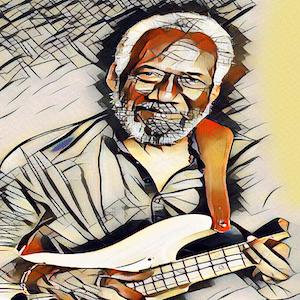

At one time tagged as the hardest working bass player in America, Chuck Rainey’s bass playing on successful television shows, motion pictures and recordings illustrate his well-known and legendary style, feel and concept for the instrument and its role in music. His unique bass lines accent some of the greatest music ever recorded. Without any argument, he is the most recorded bass player in the history of recorded music and is the one of the most imitated by bass players as a whole.
Born in Cleveland, Ohio as Charles Walter Rainey III, Chuck boasts a native ‘son ship’ of Youngstown, Ohio, where he was actually raised and educated. Originally trained in the classics as a trumpet player by C.F. Brown, James Ramsey and John Busch, Chuck switched to Baritone Horn while attending Lane college in Jackson, Tennessee and was an intricate part of the schools well known and traveled ‘brass ensemble’ in the early ’60s.
Learning to play the guitar while on military active duty before college, eventually led him to professionally play the guitar with local bands in Youngstown and Cleveland after returning home from college and military obligations. Since his formal training did not encompass improvisational skills, his guitar playing ability was limited to ‘rhythm playing.’ He began to play the ‘electric’ bass instrument after it was obvious that his skills were more valuable playing single note patterns, which he displayed as a guitar player.
His arrival in New York City during the spring of 1962 coincided with the beginning of a new era in American commercial music. After a 3 and a half-year stint with legendary FT. Worth sax man King Curtis in New York, Chuck began an illustrious career as a ‘sideman’ in the recording studio along with Bernard Purdy, Eric Gale, Richard Tee, Donny Hathaway, Paul Griffen and Herb Lavelle to name a few.
During the period 1963 thru 1971, Chuck toured and/or recorded with some of the most prominent artist of that era. They include King Curtis, Sam Cooke, Etta James, The original Coasters, Jackie Wilson, Harry Bellefonte, Al Kooper, The Supremes, Labelle, Aretha Franklin, Roberta Flack and Quincy Jones. Of special note; As a member of ‘The King Curtis All Stars’, the second Beatle Tour of the US took him to Los Angeles where he made a commitment to return as soon as the Universe saw fit.
Moving in 1972 from New York to Los Angeles as a member of Quincy Jones big band, his career as a studio musician continued to grow. Additionally, his unique style brought him opportunities in the television and film industries where he can be heard performing on musical themes and in the source music of numerous motion pictures, television series and sitcoms, along with radio and TV advertisements. he also has composer, arranger and production credits in his career.
A recipient of a grant from The Ohio Arts Council in 1981, Chuck joins the group of a selected few ‘music sidemen’ who have been a recipient of prestigious awards. They include; 17 platinum or gold records, The Dean Markely ‘Life Time Of Achievement’ Award, Bass Player Magazine/New York Bass Collective ‘Life Time achievement’ Award, a record 35 year consecutive placement in the top 10 music poll (category – bass) in Downbeat and Playboy Magazines and the list goes on.
Thanks in part to a brilliant conceptual nature of his musicianship, he made important contributions to the success of pop, rock, jazz fusion and rhythm & blues during the 60s’, 70’s and 80’s. Chuck is still very much in his conceptual playing ability and performance throughout the worlds music community.
His music activities in education reach far out into the world’s organized music communities. and Chuck’s textbooks and educational videos are tools used by many educators in their curriculums.
Absolutely fascinating review of Chuck’s contribution to the expanse of music.